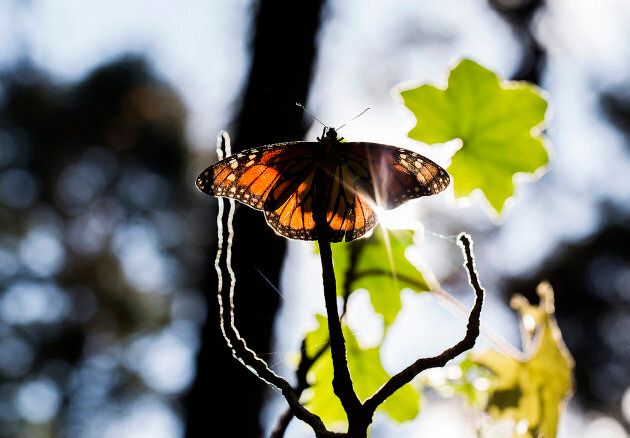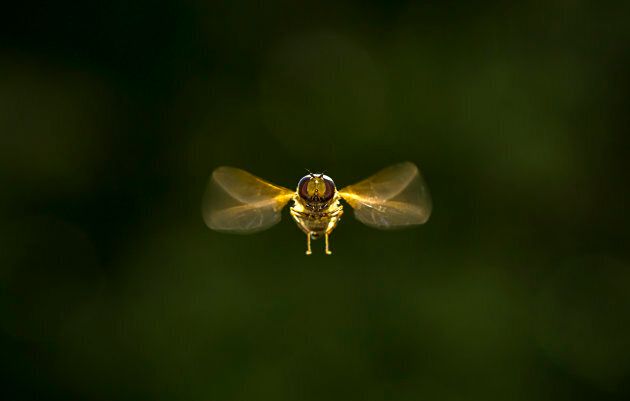Masses of monarch butterflies fluttering across Toronto's waterfront. Painted ladies (often mistaken for monarchs) descending on Montreal. Combined with the hottest September ever recorded in the Great Lakes region, it's been a strange time in Eastern Canada. We should savour the joys of these captivating critters while we can, because their future — and that of insects generally — is uncertain.

Many Ontarians noticed this year's unexpected monarch bounty. It's difficult to determine population size during migration, but after two decades of fewer and fewer sightings, the number of monarchs this summer has been astounding. Hundreds of thousands are now flitting to Point Pelee, where they congregate, before heading across Lake Ontario to begin their 4,000-kilometre journey back to the alpine Mexican forests, where their great-great-great grandparents began in March.
Why have monarchs had such a stellar summer? For the past few years, they've faced a number of climate-related calamities, from winter storms in Mexico to scorching heat in their breeding grounds in Texas, the U.S. Midwest and Southern Canada. Widespread herbicide and pesticide use has been linked to dramatic declines in monarchs and the milkweed host plants they depend on.
This year they've had great conditions throughout their journey. Even the weirdly wet summer that put Toronto Island and many beaches underwater appeared to be a boon, as it ensured wildflowers were in full bloom, providing plentiful nectar to fuel their return trip.
The unexpected appearance of charming critters like monarchs and painted ladies could cloud a greater issue.
The painted ladies stopover story is different, though also related to strange summer weather. Scientists believe shifting weather patterns and winds pushed the thousands of butterflies that descended on the Montreal area to the ground by as they migrated from the northern boreal region to the southern United States.
The unexpected appearance of charming critters like monarchs and painted ladies could cloud a greater issue: the dramatic loss of less alluring insect species, such as moths, fireflies, beetles and hover flies. Monarchs and honeybees have increasingly been in the media spotlight, but as University of New Brunswick ecologist Joe Nocera noted in a recent Science magazine article, "We have a pretty good track record of ignoring most noncharismatic species."

In the article, writer Gretchen Vogel describes what entomologists call "the windscreen phenomenon." Many people recall having to clean bugs from car windshields during drives through farmland and countryside. Today, it seems drivers everywhere are spending less time scrubbing and scraping.
Although bug splatter reduction is anecdotal, a growing body of research shows many once-common insects are declining. A study published in Science found most known invertebrate populations have dropped by 45 per cent over the past four decades. The Royal Society for the Protection of Birds reports the U.K. has seen a 59 per cent decline in insects since 1970. Global estimates point to a 40 per cent reduction of all pollinating insects.
These species are irreplaceable parts of the natural world.
As reporter Tom Spears asks in an Ottawa Citizen article, "So, who cares about bugs?" It's a fair question. Many of us were raised to disdain, or even fear, critters. Numerous species remain unloved or fly below our radar.
As we learn in elementary school, honeybees and wild bees pollinate much of our food. We are now coming to grips with the alarming consequences of losing pollinators, even if it's been difficult to diagnose the multiple causes. Insects also provide a host of other essential services, from making soil healthy and controlling pests to being a nutritious food source for birds. A 2006 study suggests wild insects provide ecological services worth $57 billion annually.

Beyond any economic value, these species are irreplaceable parts of the natural world. We must acknowledge and remedy their quiet decline before we experience the next "silent spring," a term popularized by scientist Rachel Carson, who noticed in the 1960s that widespread pesticide use was killing songbirds.
As we move into fall, I encourage you to take note of the bugs in your life. Many are now flitting to warmer climates or crawling into crevices and burrows to wait out the winter. Given the rapidly changing climate, we don't know what impact the next hurricane, Arctic vortex or 35-degree-Celsius September day will have on charismatic and not-quite-as-appealing insects. So, savour the moment, monarch lovers. And let's redouble our efforts to make our communities more green and resilient.
Written with contributions from David Suzuki Foundation Butterflyway Project Manager Jode Roberts.
Learn more at www.davidsuzuki.org.
Follow HuffPost Canada Blogs on Facebook
Also on HuffPost: